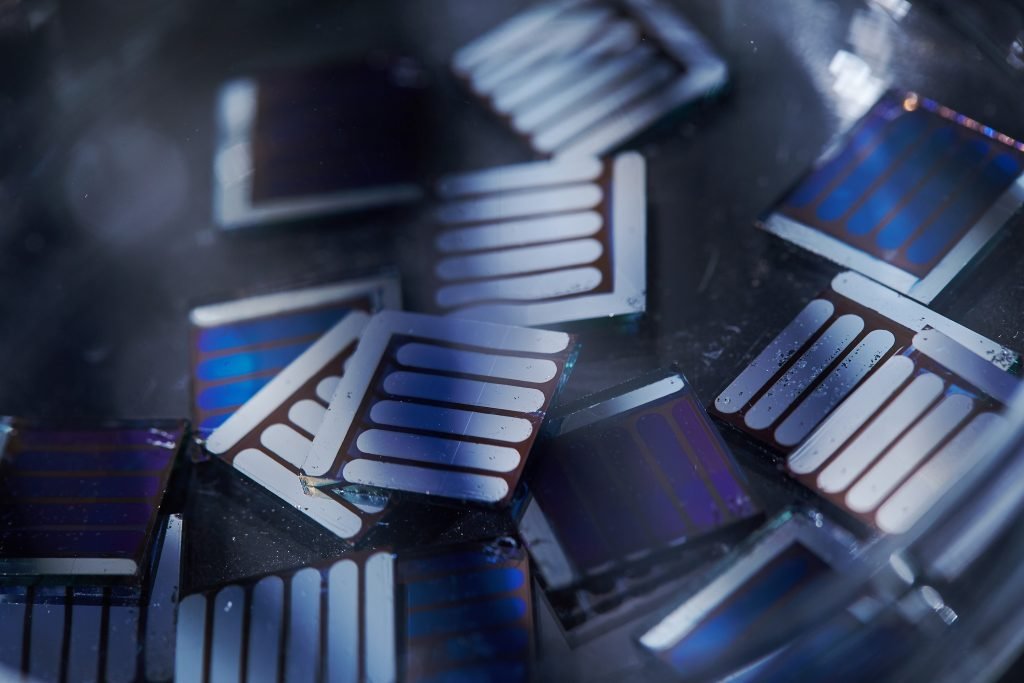South Korea’s Ministry of Trade, Industry and Energy (MOTIE) has released a new roadmap for the domestic solar module industry that envisages a strong bet on high-efficiency and expensive products such as panels based on tandem solar cells.
According to the document, domestic solar manufacturers and research institutes expect tandem solar cell technology based on silicon and perovskite to be the most promising candidate for PV products of the next generation. The Korean semiconductor and display industries, according to the MOTIE, may play a decisive role in this transition by providing its expertise in silicon product and thin film development.
Public investments of around KRW 190 billion ($159.7 million) will be devoted to research on tandem PV technologies over the next five years with the hope of reaching an efficiency of 26% by 2023 and even of 35% by 2030, the MOTIE stated. Furthermore, it intends to allocate another KRW 25 billion to build a 100 MW R&D facility for testing of TOPCon, heterojunction and tandem solar technologies.
Moreover, the MOTIE will earmark another KRW 98 billion for solar research activities. These include building integrated photovoltaics (BIPV) and floating PV, among others.
The decision to bet on a high-quality and expensive technology such as tandem PV responds to the same logic that led the South Korean government to introduce in May new rules which will see the carbon footprint of solar power projects taken into account when prioritizing new installations. The new rules will echo those applied in France, where large scale solar tenders take low-carbon manufacturing into account, as well as the price developers agree on for the power generated. South Korea, like France, has an extensive nuclear power generation capacity which will aid the low-carbon efforts of domestic solar panel manufacturers.
According to recent research from France, PV modules made with tandem solar cells will have to show efficiencies of 30% and offer the same lifetime and degradation rate as standard crystalline panels if manufacturers want to hit commercial production. According to the paper – which assesses the potential competitiveness of tandem modules against crystalline silicon products – commercial versions of the latter will reach efficiencies of 22-24% by the end of the decade, and possibly 25% if interdigitated back-contact (IBC) heterojunction products reach commercial production.
In September 2019, researchers from South Korea's Ulsan Institute of Science and Technology demonstrated a new method of fabricating perovskite-on-silicon tandem devices, using a transparent conductive adhesive to combine the two cells. The scientists have developed devices with demonstrated efficiencies of 19.4%, and propose strategies to bring that above 24% using existing technology.
This content is protected by copyright and may not be reused. If you want to cooperate with us and would like to reuse some of our content, please contact: editors@pv-magazine.com.




3 comments
By submitting this form you agree to pv magazine using your data for the purposes of publishing your comment.
Your personal data will only be disclosed or otherwise transmitted to third parties for the purposes of spam filtering or if this is necessary for technical maintenance of the website. Any other transfer to third parties will not take place unless this is justified on the basis of applicable data protection regulations or if pv magazine is legally obliged to do so.
You may revoke this consent at any time with effect for the future, in which case your personal data will be deleted immediately. Otherwise, your data will be deleted if pv magazine has processed your request or the purpose of data storage is fulfilled.
Further information on data privacy can be found in our Data Protection Policy.